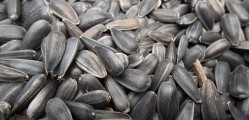
In Cows Save the Planet, journalist Judith D. Schwartz looks at soil as a crucible for our many overlapping environmental, economic, and social crises. Schwartz reveals that for many of these problems—climate change, desertification, biodiversity loss, droughts, floods, wildfires, rural poverty, malnutrition, and obesity—our ability to turn these crises into opportunities depends on how we treat the soil. Where do cows fit in?
Cattle, like all grazing creatures, can, if appropriately managed, restore land and help build soil. Rebuilding soil is only one aspect of this important, paradigm-shifting book. Drawing on the work of thinkers and doers, renegade scientists and institutional whistleblowers from around the world, Schwartz challenges much of the conventional thinking about global warming and other problems. For example, land can suffer from undergrazing as well as overgrazing, since certain landscapes, such as grasslands, require the disturbance from livestock to thrive. Regarding climate, when we focus on carbon dioxide, we neglect the central role of water in soil—“green water”—in temperature regulation. And much of the carbon dioxide that burdens the atmosphere is not the result of fuel emissions, but from agriculture; returning carbon to the soil not only reduces carbon dioxide levels but also enhances soil fertility.
Judith Schwartz is a freelance writer and author of the book Cows Save the Planet: And Other Improbable Ways of Restoring Soil to Heal the Earth. I recently met Judy at a conference held by Allan Savory of the Savory Institute in Boulder, Colorado.
The Savory Institute helps farmers to holistically manage their livestock in order to improve soil quality and heal the environment. In fact, according to Savory, an African ecologist, dramatically increasing the number of grazing livestock is the only thing that can reverse desertification (when land turns to desert).
Surprisingly, it all began with an investigation into the economy. Around 2008, just before the economic downturn, she'd started writing about the transition movement:
“One of the things that transition initiatives were dealing with was local currencies,” she says. “Looking into local currencies kind of helped me understand how local economies work and primed me to ask questions when the …
Holistic Management was developed by Allan Savory, then a biologist and park ranger in Southern Africa. He observed the deterioration of the land and wildlife compared with back when large herds of animals moved across the savanna. He concluded that grasslands needed grazing animals just as the animals needed the land. Over many years he developed a planning framework to manage livestock to behave like their wild counterparts. That's a snapshot version. Here, courtesy of the Savory Institute, is a video that provides a clear, succinct explanation of how Holistic Planned Grazing works, as well as why it's so important to the world's ecological–and by extension, economic and social–health.
Please Read this Article at Articles.Mercola.com





Leave a Reply